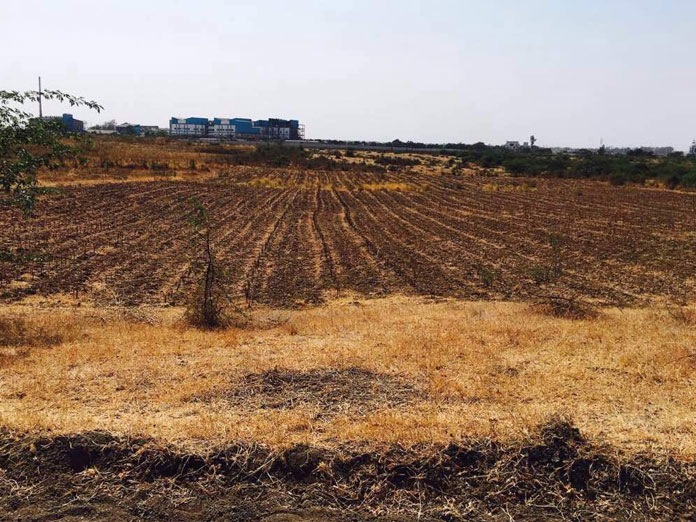Live
- India Faces Blow as Pacer Mohammed Shami Ruled Out for Remainder of Australia Series
- Farmer’s Day Celebrations Held at Palem Agricultural Research Center, Nagarkurnool
- Biden Pardon: Joe Biden Commutes Death Sentences of 37 Inmates, Including Child Killers and Mass Murderers
- South Korea: Yoon believes impeachment trial takes priority over martial law probe
- Strict Action for Non-Adherence to Time Management - DMHO Dr. Swarajya Lakshmi
- Joyful Semi-Christmas Celebrations at Sri Saraswathi International School
- Over 13.29 lakh houses approved for rural poor in Maharashtra: Shivraj Chouhan
- District Collector Urges Timely Completion of Indiramma Housing Scheme Survey
- Digital Arrest Scam: Hyderabad Man Duped of ₹7 Lakhs by Fake Crime Branch Police Callers
- Sukhbir Badal seeks President's Police medal for officer who saved his life
Just In

The availability and usability of land to many investment sectors are essential, and yet these are areas that do not get the attention they deserve while making investment decisions and formulating policies In the Indian context, this issue assumes greater importance, given the problems related to land that businesses and investors have faced in the past Regardless, some fundamental questions mu
The availability and usability of land to many investment sectors are essential, and yet these are areas that do not get the attention they deserve while making investment decisions and formulating policies. In the Indian context, this issue assumes greater importance, given the problems related to land that businesses and investors have faced in the past. Regardless, some fundamental questions must be answered regarding usability and relevant ‘land availability’.
The first question is whether land that is required for creating the appropriate infrastructure or projects is available in the requisite size? It is axiomatic that land sites must be available for such infrastructure to be built upon.The second question is whether land that is available is relevant for the project under consideration? For instance, in the case of data centre infrastructure, there is the need for land parcels that are contiguous to each other, to create a large tract of land that can be relevant for the project.
The third question is whether the land that is available can be used to create an ecosystem that will help deliver both financial and economic value from the assets in question? In the case of the data centre infrastructure, this would mean the land has access to the uninterrupted power or has alternate arrangements for power procurement.It is crucial to identify land that meets all these three required conditions for India to fulfil its ambition as a hub of global and domestic investments.
A careful analysis of the underlying conditions regarding land availability and usability, as explained above, will help both investors and the government accelerate the investment process.Essential learnings from past experience have a lot to teach us on how to improve and expedite the investment process in India. For instance, India's mixed experience with Special Economic Zones (SEZs) versus the much more successful Chinese SEZ experience is in no small extent due to choices regarding land site selection.
In the study "The Developmental Effects of Special Economic Zones: Evidence from India's States", Meir Alkon points towards the fact that site selection for some India SEZs was driven by reasons other than business demand. The absence of business demand, and, therefore, financial viability of the location of the Indian SEZ was a significant factor in the issues that the SEZs faced.In the context of SEZs specifically, and more generally regarding land acquisition, one must realise the value that optimal site selection creates.
The optimal site selection provides investment returns to the investors, and additionally, it also allows for more productive use of land. On the contrary, when site selection is poor, not only do investments suffer, but the land is rendered useless since it cannot be reverted to its original use, such as farming. Land for prospective India SEZ use that becomes of no value due to incomplete or non-functional projects is a case in point.
Land selection is also an issue that is relevant for the residential real estate segment, a segment that has seen a protracted downturn in India over the last few years. The basic questions around the availability, usability and ecosystem linkage apply as much to residential real estate as to any other sector.One issue that has been a reason for the sector's woes has been site selection in projects that fundamentally lack the ecosystem linkages that would create a residential real estate asset of value to the user at the correct price.
Real estate sites with low access to transportation from clusters of employment, probably one of the significant drivers of real estate value in urban cities globally, has led to incomplete projects, constrained balance sheets of real estate companies and the consequent non-performing assets of banks.Ironically, the demand for urban housing is growing even as the residential real estate supply glut builds up: it is indeed a classic case of market failure driven by many factors with poor "land choices" being a significant contributor.
Regardless of whether you are an equity sponsor, project developer, lender or the government, factoring in the fundamentals of the "micro-market" of land and the accompanying requirements are essential for success. Gaps in investment ideas and policies of the past provide us with both a template of pitfalls to avoid and the significance of prudent decision-making frameworks on land choices as we move ahead.
-Taponeel Mukherjee

© 2024 Hyderabad Media House Limited/The Hans India. All rights reserved. Powered by hocalwire.com







